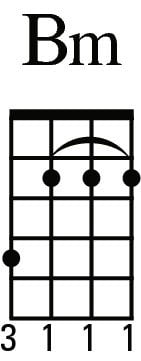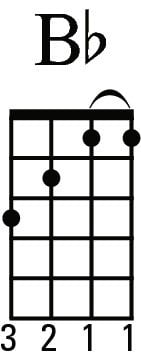
If the chord is played a long way up the neck, a number at the top right indicates the fret at which the chord diagram starts.
Playing a B♭ chord on your ukulele
The B♭ chord requires you to fret two strings with one finger. To start, take your index finger and use the top third of it to fret both the E- and A-strings at the first fret. When you can hold this fingering down so that both strings sound clearly when you play them, move on to the full B♭ chord by placing your middle finger on the C-string at the second fret. Then bring your ring finger over to fret the g-string at the third fret. When you’re done, your hand should look like this: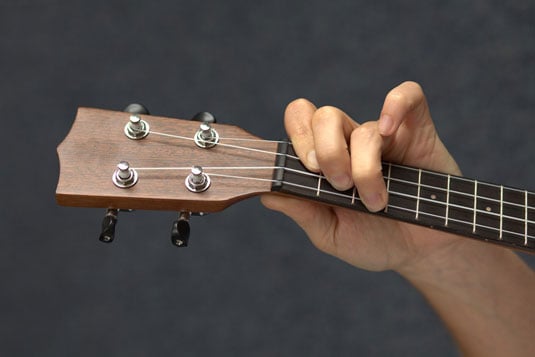
When you’re playing the B♭ chord, make sure that your thumb is central on the back of your uke’s neck. This technique helps in two ways:
-
Your middle and ring fingers arch high above the E- and A-strings so that you don’t mute them.
-
You can get more pressure on the chord so that the strings ring clearly.
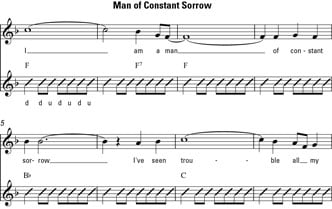
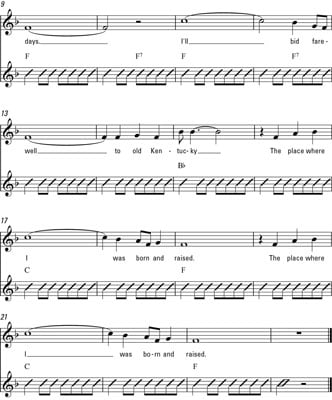
Playing a D7 chord on your ukulele
The D7 chord takes the idea of a barre chord one step further than the B♭. To form this chord, you barre across all the strings. Start by laying your index finger across all the strings at the second fret so that the tip of your finger is just past the edge of the fretboard.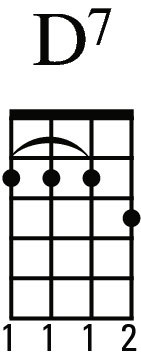
Position your thumb at the back of the uke’s neck so that you can squeeze the chord a little. The amount of pressure to use is a delicate balance. The priority is to ensure that all the strings are sounding.
When you have the barre down, test each string to make sure that you can hear it clearly. You may well have to fidget your finger and change the pressure until you get it right. But be careful not to use more pressure than you need. Squeeze too tightly and your hand quickly gets tired.
When you’re confident in your barre, add your middle finger to the A-string at the third fret.
Playing a B minor chord on your ukulele
To play the Bm shape, start off exactly the same way as D7: barring across all strings at the second fret with your index finger. This time, though, you reach over the strings with your ring finger to play the g-string at the fourth fret to create the D7 shape: